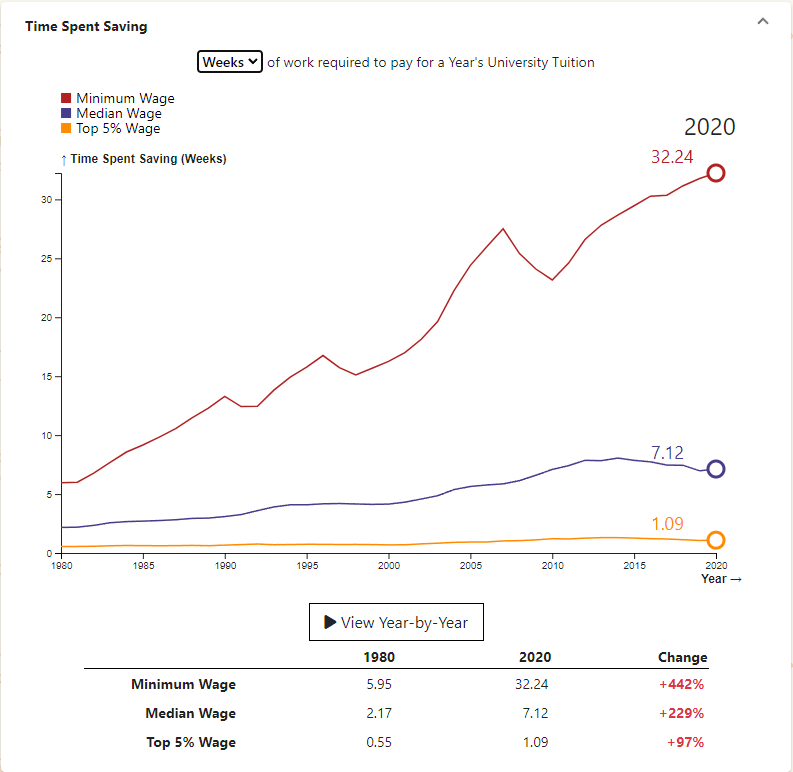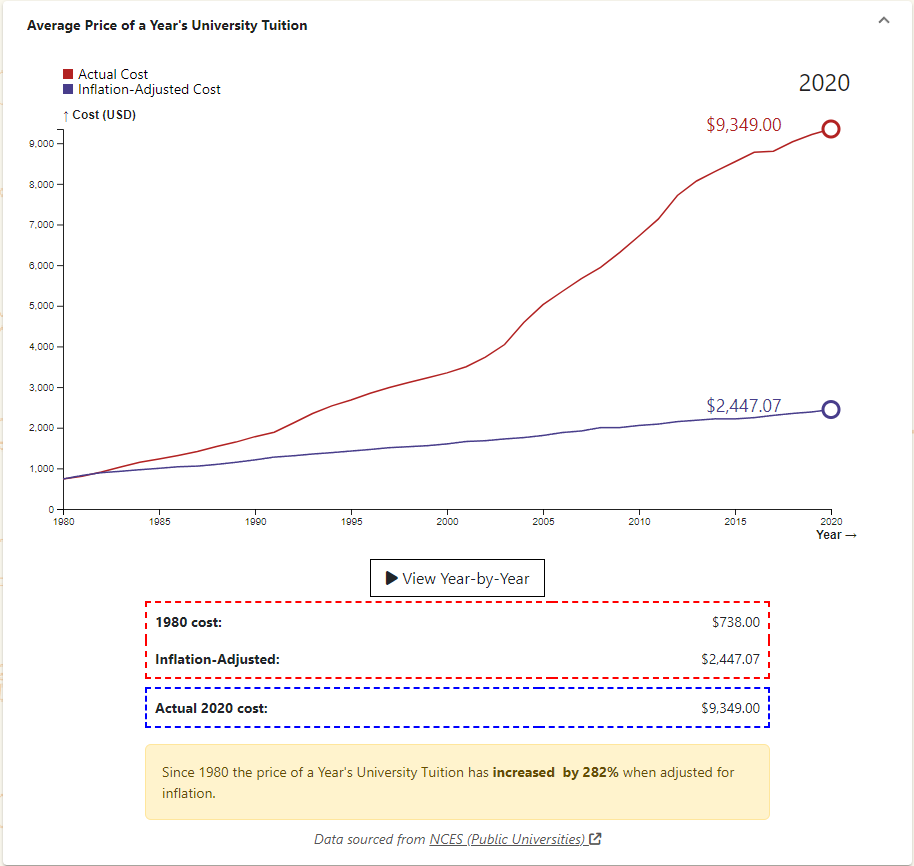
Workers have to work for a longer period of time in order to afford University Tuition than they used to in 1980. The trend is hardest on minimum wage workers who have to work 32.24 weeks of full-time work in 2020 to afford tuition, compared to 5.95 weeks of full-time work in 1980. This ignores taxes and assumes all money earned is put toward tuition.
Since 1980 the price of a Year’s University Tuition has increased by 282% when adjusted for inflation.

Wages have gone up nominally, but not as much when accounting for inflation. The minimum wage has decreased since 1980 after adjusting for inflation.

Sources:
- Median and Top 5% Income: Census.gov (Table H-3)
- Minimum Wage: Department of Labor
- Year’s University Tuition: NCES (Public Universities)
Visualized on boomerchecker.com
Edit:
- Fixed an error when converting Median and Top 5% from annual to weekly. The time to save for those two brackets rose as a result.
- Added wage data for the different wage brackets for reference.

Moreso just says minimum wage is terrible. I’m actually pretty surprised that college went down recently relative to median wage.
It’s ridiculous we don’t just peg minimum wage to some index of local cost of living and forget about it.
This graph is also misleading it show the cost in weeks for a New York college but uses a federal minimum wage (7.25/HR) instead of the New York State minimum wage (14.20/HR) which would bring down the weeks to around 16.
*It was pointed out this wasn’t for a New York college so this isn’t perfectly accurate. Though I think referencing the federal minimum wage is a bad idea.
Hmm, looks to me like this is an average of lots of colleges around the nation, not just New York. Where are you getting that info?
https://nces.ed.gov/programs/digest/d21/tables/dt21_330.10.asp
Looks like my reading comprehension failed me. Sorry for the bad assumption.
It would be interesting to have a more region-specific breakdown of this information, especially since the U.S. is so big and costs (and minimum wages) vary widely from place to place. I haven’t been able to find more granular data, though.